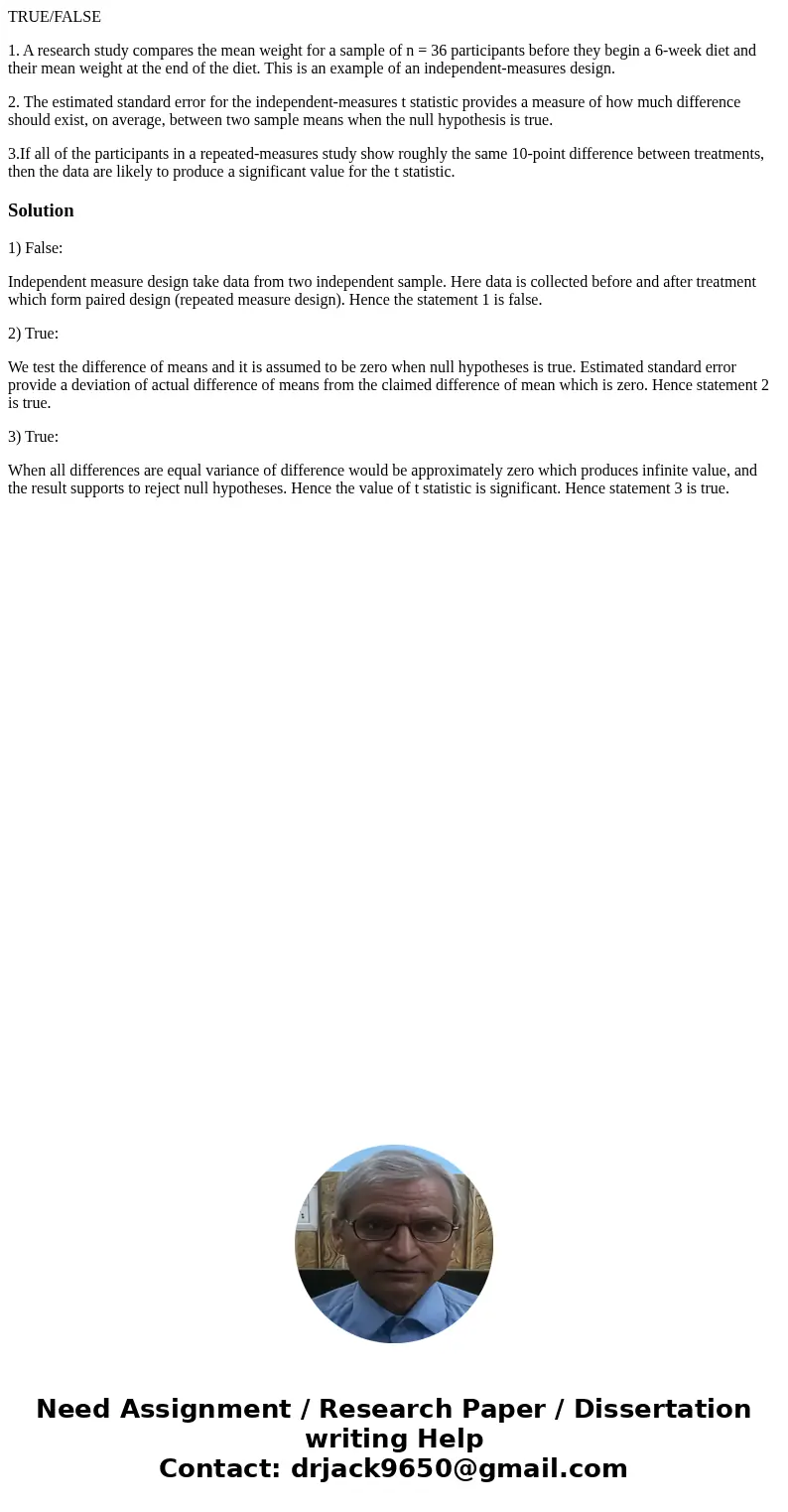TRUEFALSE 1 A research study compares the mean weight for a
TRUE/FALSE
1. A research study compares the mean weight for a sample of n = 36 participants before they begin a 6-week diet and their mean weight at the end of the diet. This is an example of an independent-measures design.
2. The estimated standard error for the independent-measures t statistic provides a measure of how much difference should exist, on average, between two sample means when the null hypothesis is true.
3.If all of the participants in a repeated-measures study show roughly the same 10-point difference between treatments, then the data are likely to produce a significant value for the t statistic.
Solution
1) False:
Independent measure design take data from two independent sample. Here data is collected before and after treatment which form paired design (repeated measure design). Hence the statement 1 is false.
2) True:
We test the difference of means and it is assumed to be zero when null hypotheses is true. Estimated standard error provide a deviation of actual difference of means from the claimed difference of mean which is zero. Hence statement 2 is true.
3) True:
When all differences are equal variance of difference would be approximately zero which produces infinite value, and the result supports to reject null hypotheses. Hence the value of t statistic is significant. Hence statement 3 is true.

 Homework Sourse
Homework Sourse